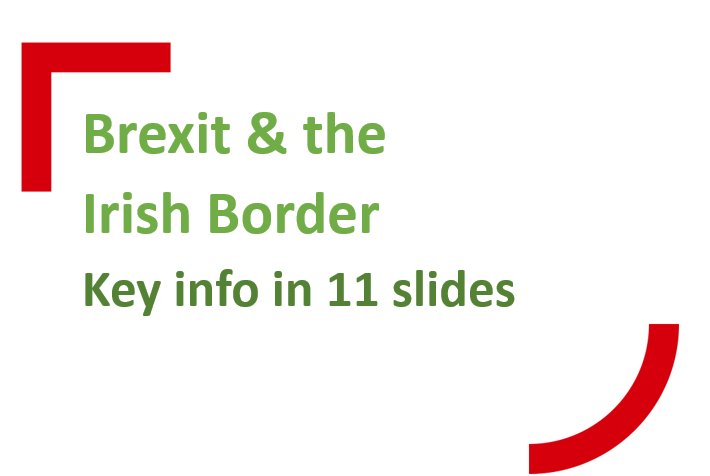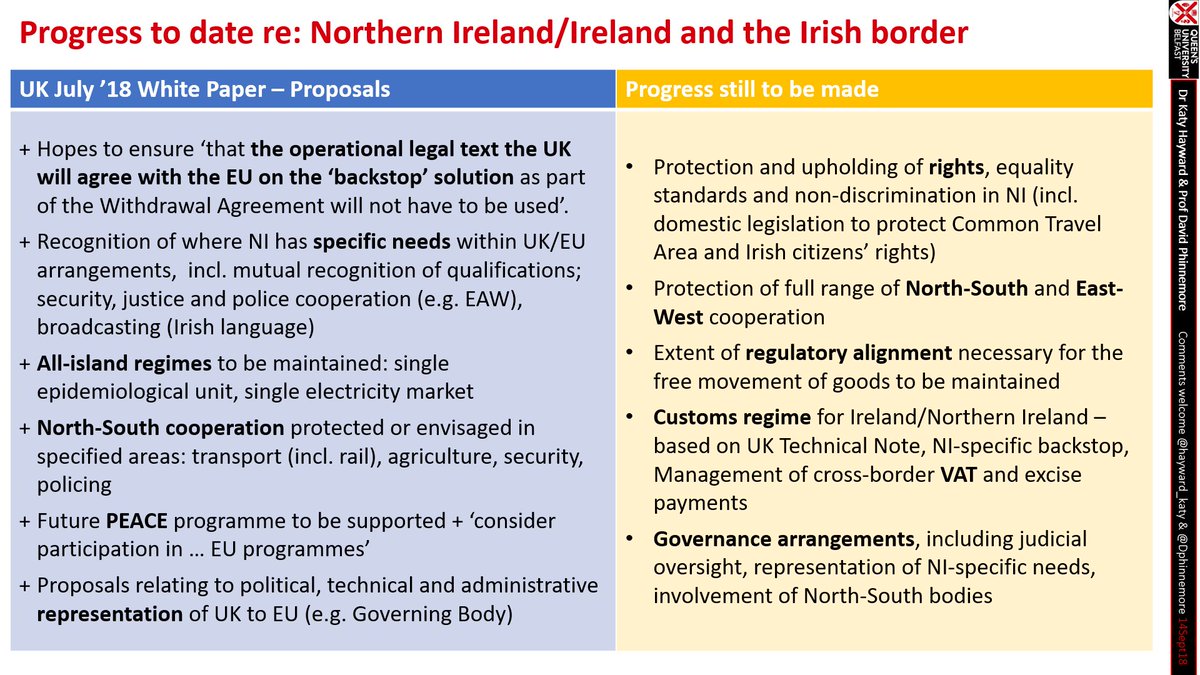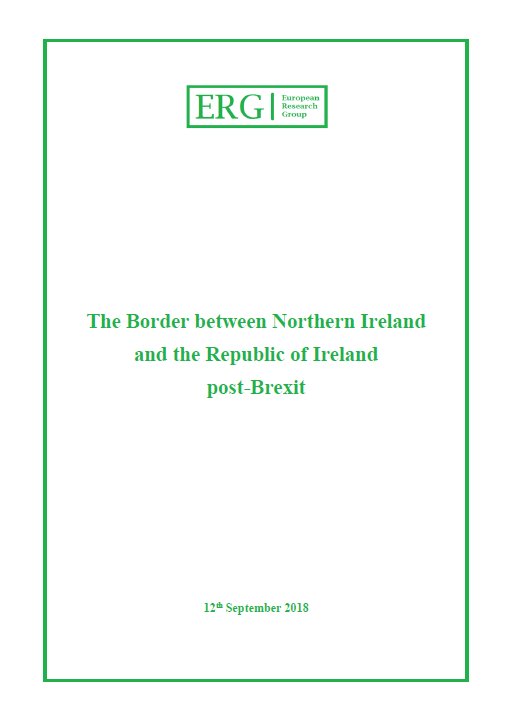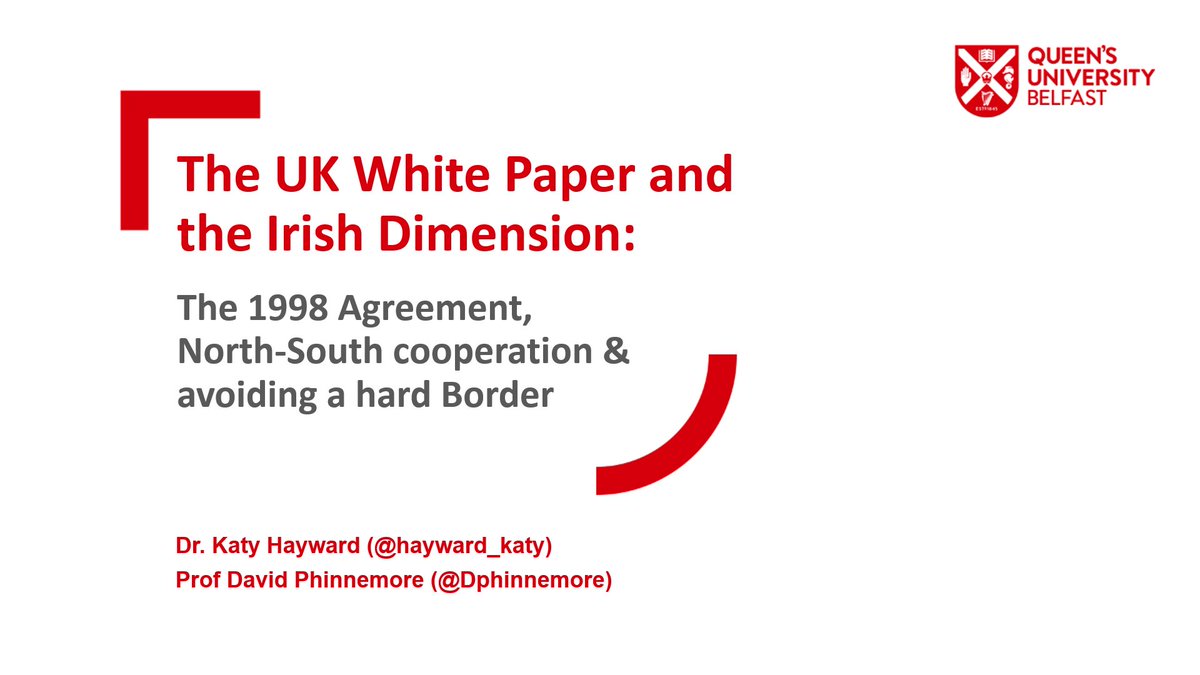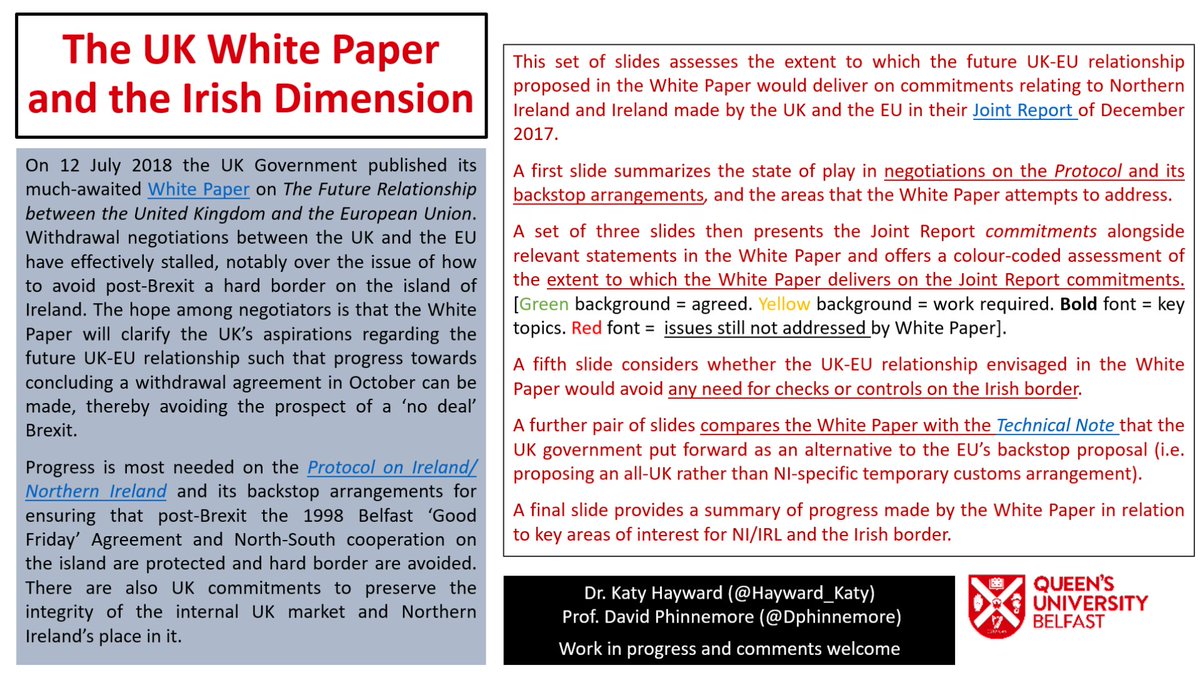Here's a hint at what a post-Brexit ‘hard border’ for the movement of goods looks like.
It’s a summary of what it means for the UK to become a 3rd country, the baseline from which a trade agreement is built...
#BrexitBorder
HT @robmurphybe @mauricecampbell
1/
It’s a summary of what it means for the UK to become a 3rd country, the baseline from which a trade agreement is built...
#BrexitBorder
HT @robmurphybe @mauricecampbell
1/
Subject to any transitional arrangement in a Withdrawal Agreement, the following applies for the movement of goods between the EU27 (inc IRL) & the UK as a third country, as of 30 March 2019:
2/
2/
Goods which are brought into the EU's customs territory from UK or vice versa are subject to customs supervision & may be subject to customs controls,
i.e. customs formalities apply, declarations have to be lodged, customs authorities may require guarantees for customs debts.
3/
i.e. customs formalities apply, declarations have to be lodged, customs authorities may require guarantees for customs debts.
3/
Certain goods going EU->UK or UK->EU are subject to prohibitions or restrictions on grounds of public policy, public security, the protection of health & life of humans, animals or plants.
So, baseline specifically includes restrictions on movement of agricultural produce.
4/
So, baseline specifically includes restrictions on movement of agricultural produce.
4/
AEO status of UK co.s in EU customs territory is no longer valid.
Same goes for authorisations for customs simplifications.
Same goes for UK goods currently benefiting from EU Commercial Policy & preferential tariff in EU external trade.
5/
Same goes for authorisations for customs simplifications.
Same goes for UK goods currently benefiting from EU Commercial Policy & preferential tariff in EU external trade.
5/
On Tax: UK goods and persons are now outside the VAT territory of the EU. It means that VAT is now charged at point of importation from UK into EU.
It is no longer possible to claim a refund of VAT for goods/services purchased/imported from an EU MS via electronic means.
6/
It is no longer possible to claim a refund of VAT for goods/services purchased/imported from an EU MS via electronic means.
6/
The movement of goods to/from the excise territory of the EU to/from that of the UK is treated as the importation or exportation of excise goods. But the Excise Movement and Control System (EMCS) on its own is no longer applicable.
7/
7/
Movements of excise goods EU->UK require an export declaration as well as an electronic administrative document (e-AD).
Movements of excise goods UK->EU have to be released from customs formalities before a movement under EMCS can begin.
8/
Movements of excise goods UK->EU have to be released from customs formalities before a movement under EMCS can begin.
8/
Where import/export of goods is subject to a licensing requirement under Union law, shipments between EU & UK require such an import/export licence. But import/export licences issued by UK as an EU MS are no longer valid for shipments to EU27 from 3rd countries or vice versa. 9/
Import/export licences exist for a wide range of policy areas & goods, inc. waste, hazardous chemicals, drug precursors, firearms, rare specimens.
It doesn't just mean a need for new licencing but a need to ensure UK borders aren't gaping hole for illegal mvnt of such goods. 10/
It doesn't just mean a need for new licencing but a need to ensure UK borders aren't gaping hole for illegal mvnt of such goods. 10/
All this is taken from EU Commission’s new website on customs & taxation after Brexit, which is intended to inform companies & individuals trading in the UK, as well as EU & national authorities. It will be regularly updated.
bit.ly/2DMHUtW
Essential #BrexitBorder
11/11
bit.ly/2DMHUtW
Essential #BrexitBorder
11/11
• • •
Missing some Tweet in this thread? You can try to
force a refresh


